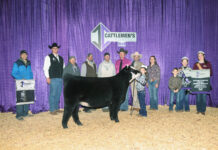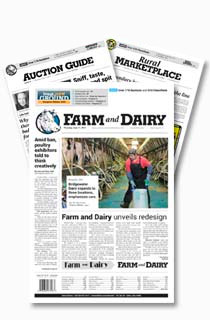Search Results for "Dill"
News Results 911 of 1000 pages
Roaring isn’t just for lions
URBANA, Ill. — It is estimated 3-5 percent of young thoroughbreds have left laryngeal hemiplegia, also known as roaring. In laymen’s terms this means the nerve controlling the opening of the horse’s arytenoid cartilage is damaged. The arytenoid cartilages usually close over the trachea when a horse swallows, but they should quickly pop back open
Oil to blame for high production costs
URBANA, Ill. — Between 2003 and 2007, the majority of corn and soybean production cost increases can be attributed to crude oil price increases, according to a new University of Illinois Extension study. “If crude oil prices continue to rise, production costs for corn and soybeans likely will continue to rise,” said Gary Schnitkey, a
World War II landing ship makes maiden voyage as floating museum
A World War II amphibious vessel will serve as a floating memorial, making a maiden educational voyage on the Mississippi and Ohio rivers this summer.
Interest in alternative medicine growing
More Americans are becoming interested in alternative medicine. And acceptance by mainstream health care providers is growing, too.
Drought causes more than just financial stress, also emotional
The weather causes financial stress for many families, however, it also causes emotional stress and depression.
Dairy farmer can keep milking
SALEM, Ohio – A Darke County judge has ruled that milk producer Carol Schmitmeyer can continue operating as a Grade A dairy producer as long as no raw milk is distributed to her herd share customers.
Battle of the best: Championship tractor pull will be Feb. 15-18
Find the full schedule for the championship tractor pull here.
How to care for rabbits
Learn more about housing, feeding, grooming and handling requirements and best practices for rabbits.
Summit County fair board fights fairgrounds eviction
Summit County Executive James McCarthy says the county agricultural society is in default of a loan and the county has the right to evict the society from the fairgrounds and take control of the land.
Feed from genetically modified crops has no adverse effects
Since their introduction in 1996, genetically engineered, often called genetically modified, feed crops have become an increasing component of livestock diets.









